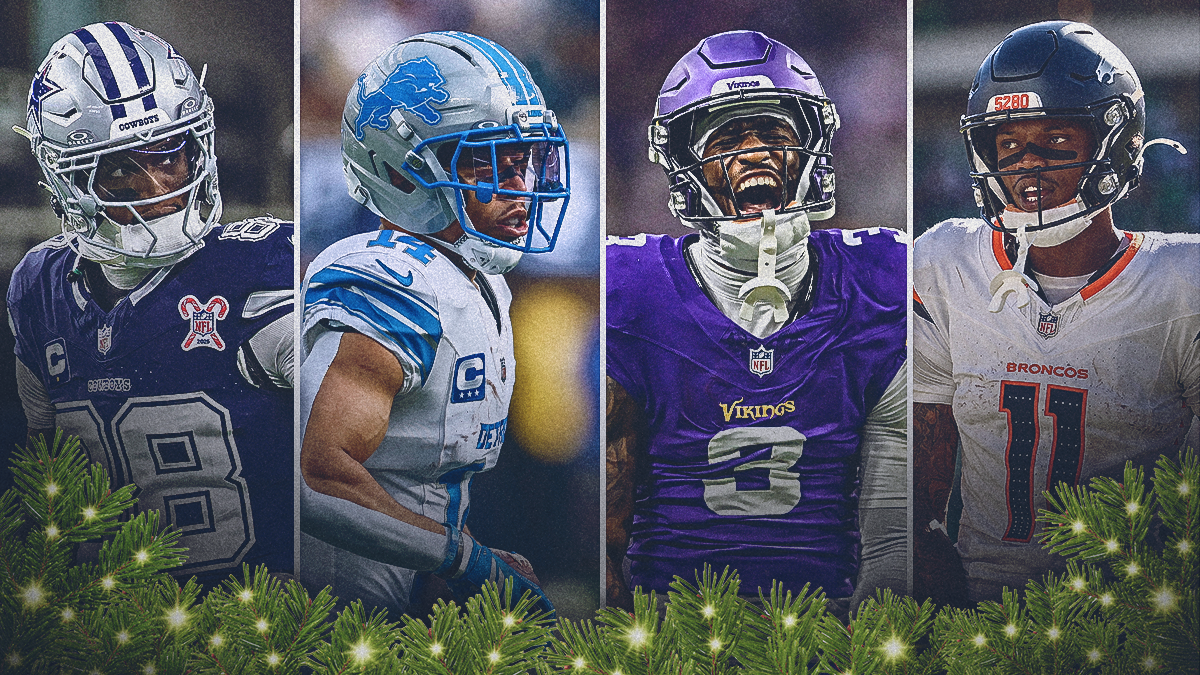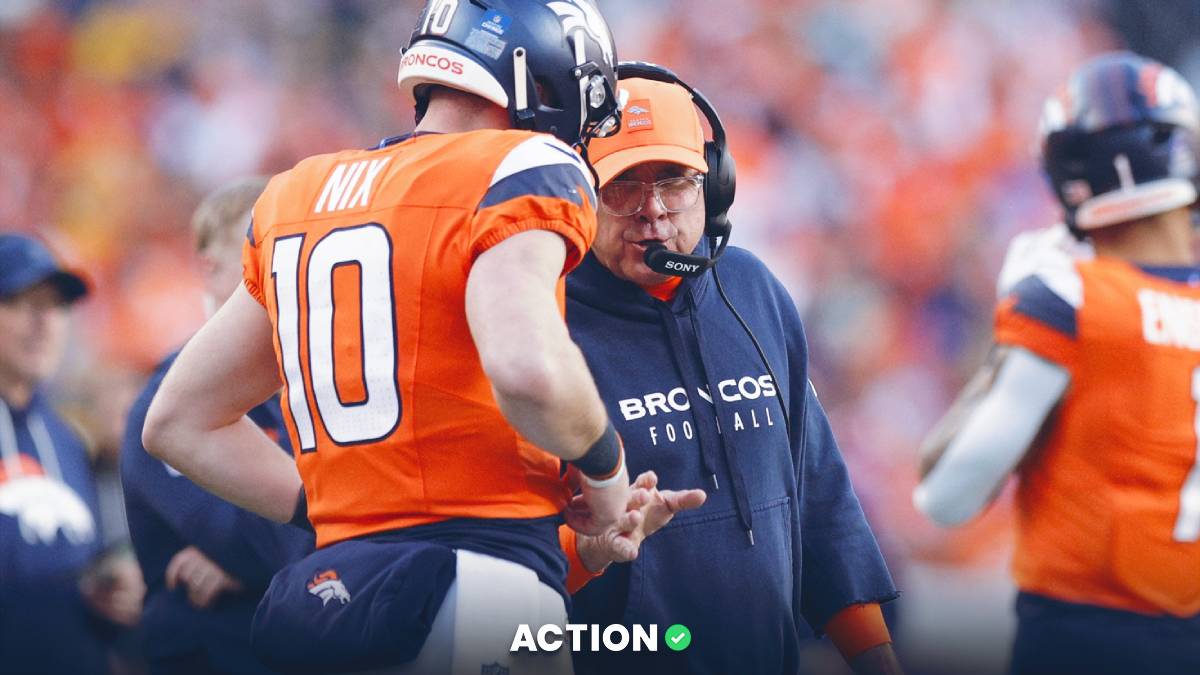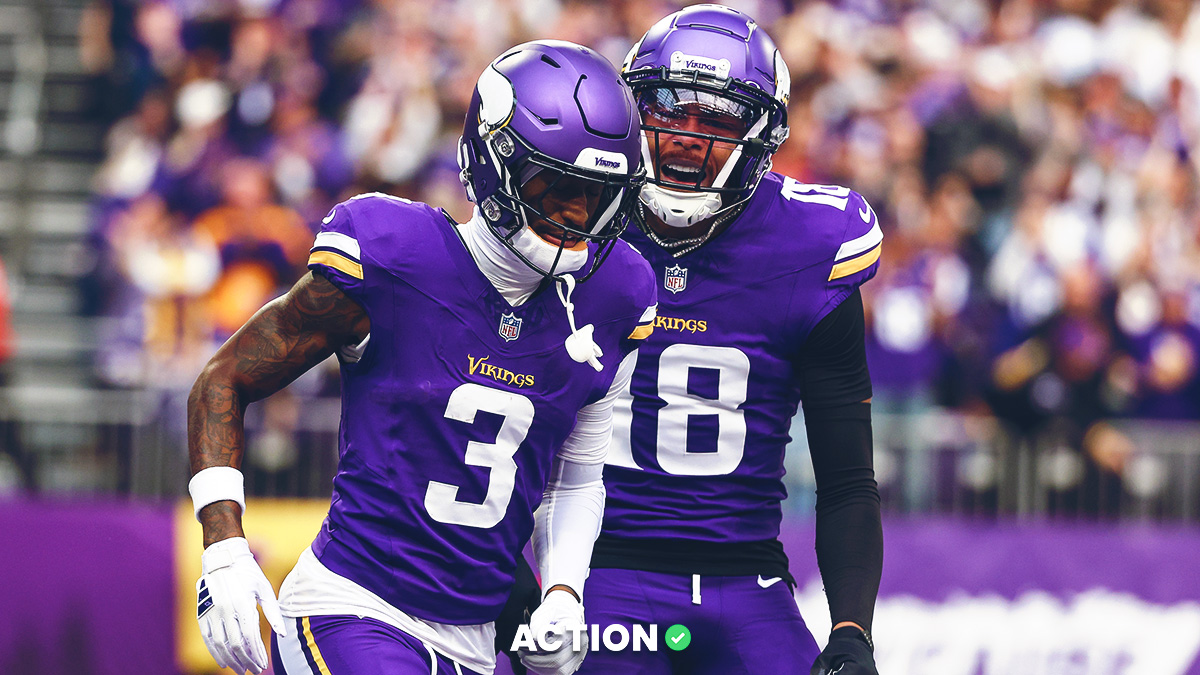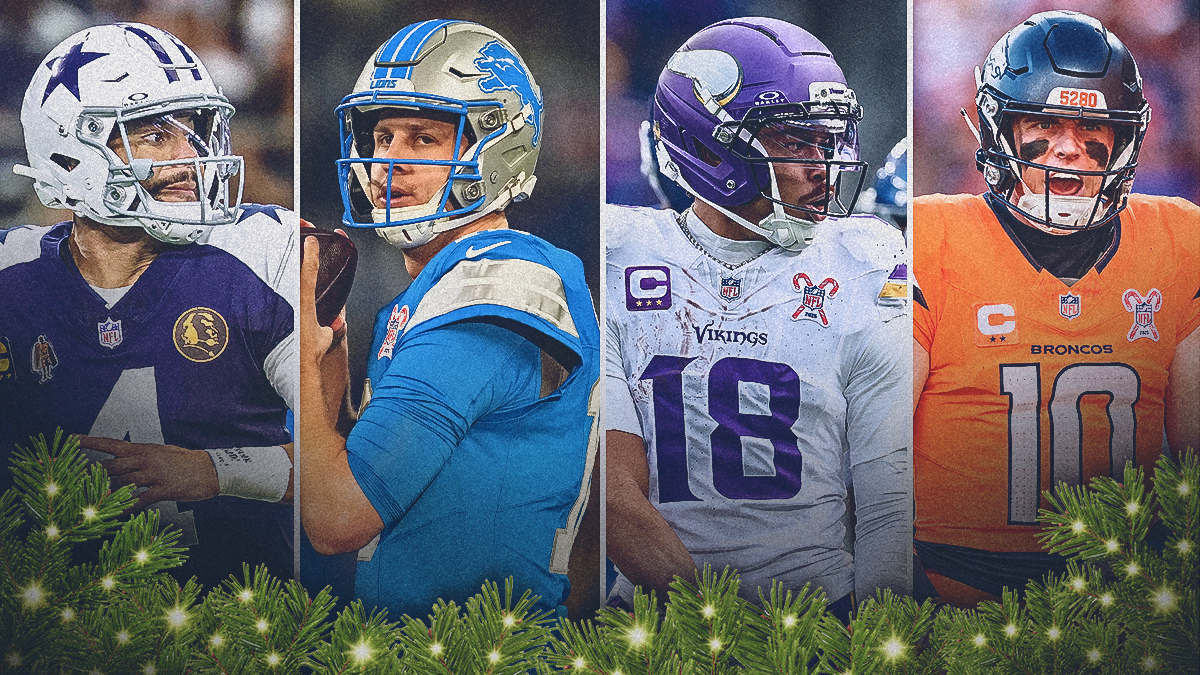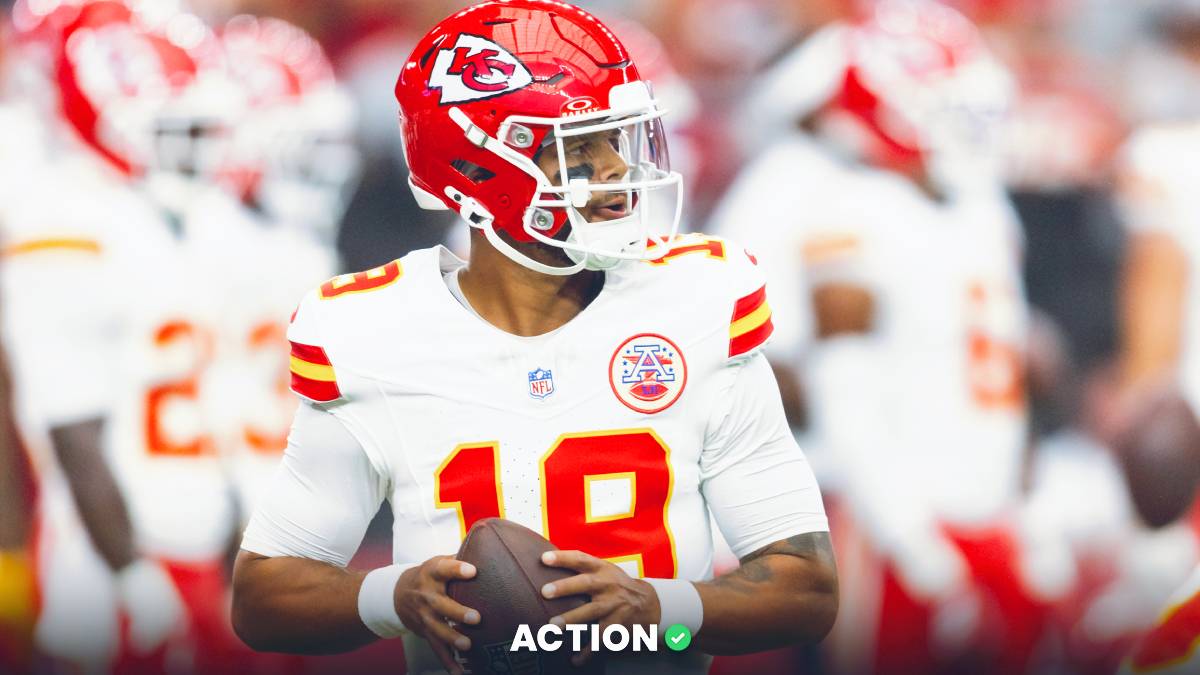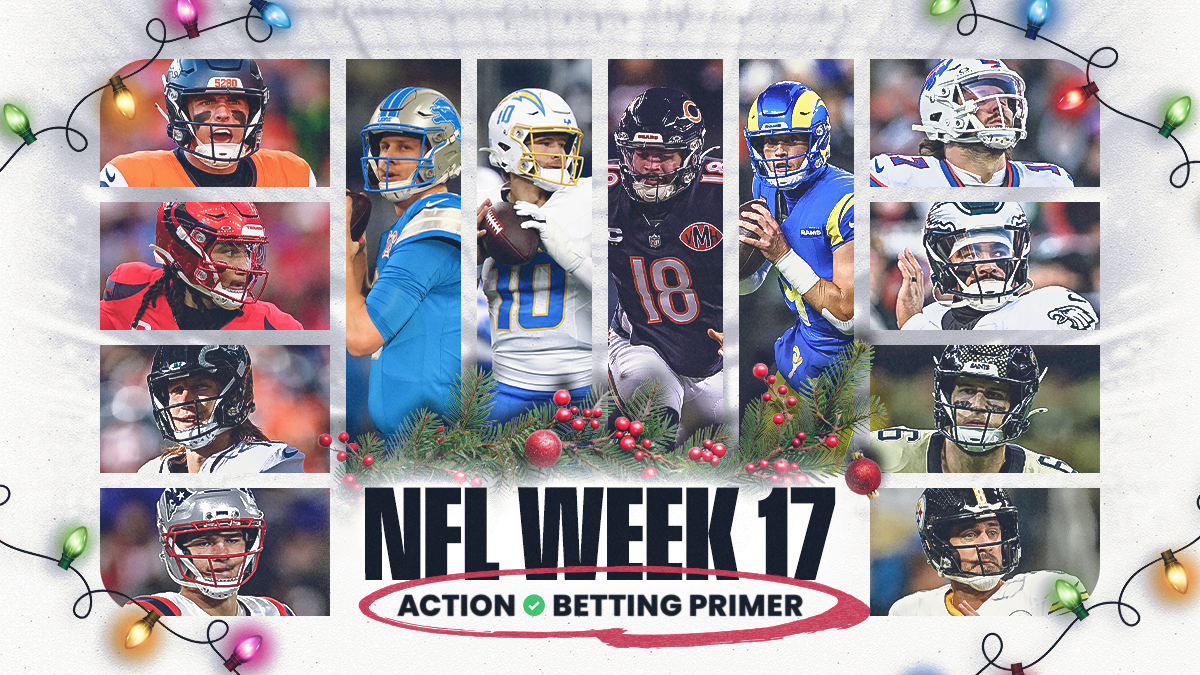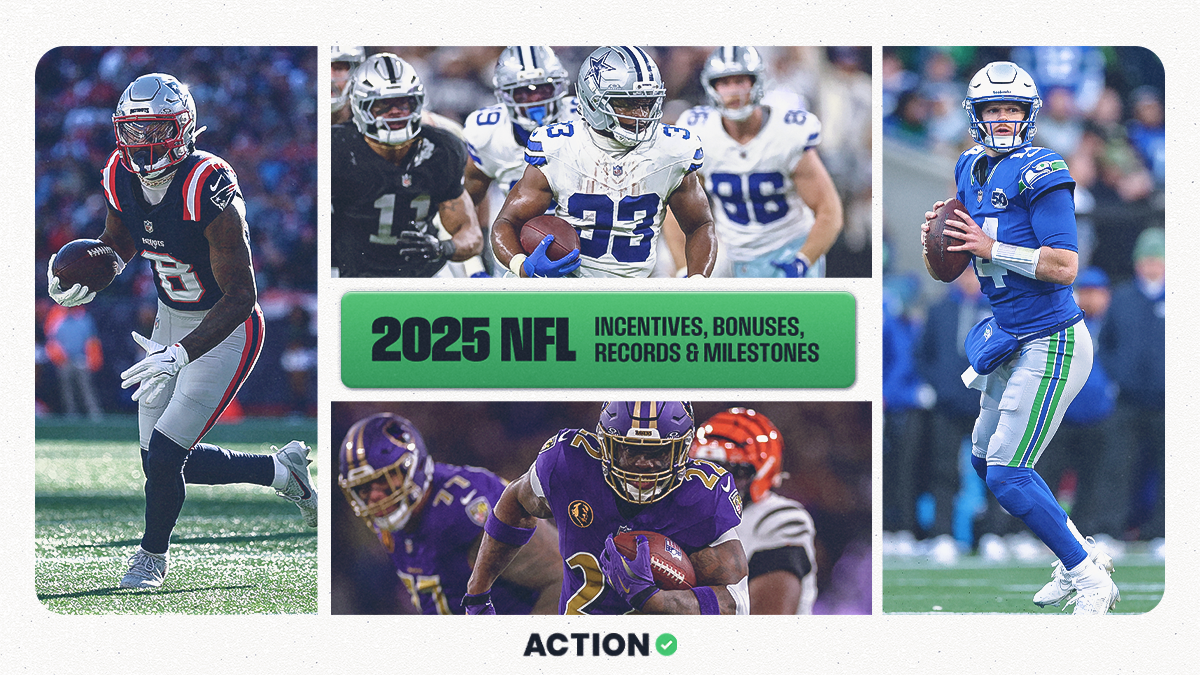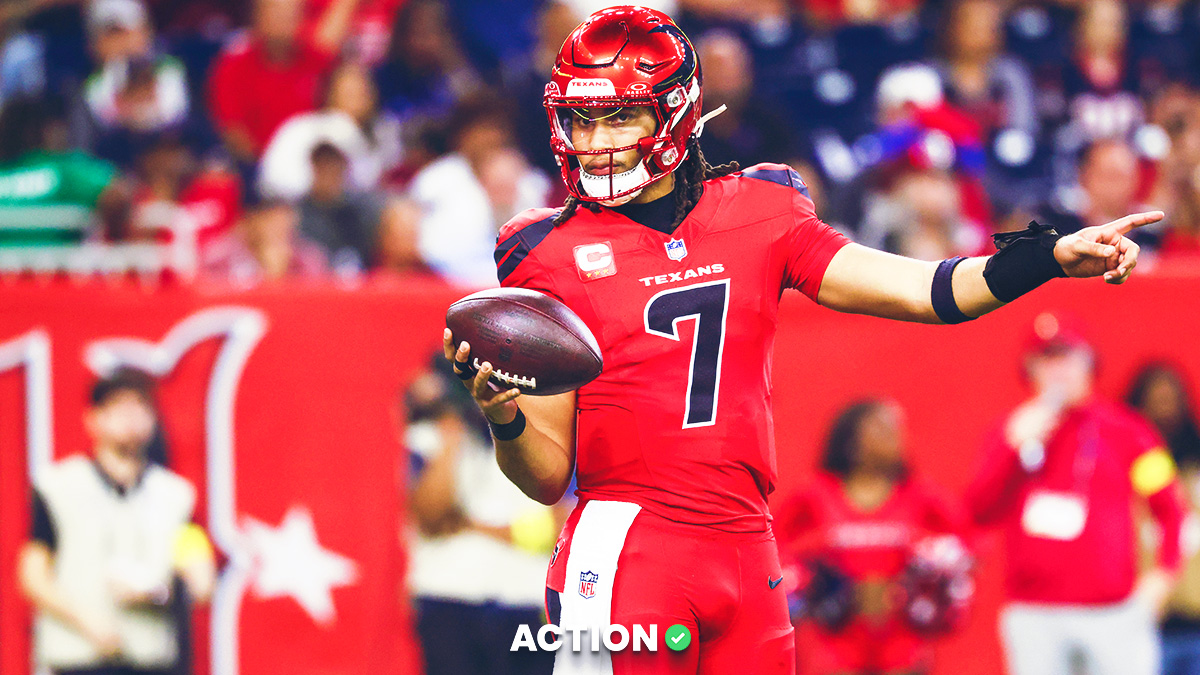It's finally NFL Draft week, and it's a loaded quarterback draft.
No position in team sports is more important than QB. Any team without a franchise signal caller will be expected to consider one of the names atop the first round of the 2024 NFL Draft.
We could see four quarterbacks among this year's top 10 picks: Caleb Williams (USC), Jayden Daniels (LSU), Drake Maye (North Carolina), and J.J. McCarthy (Michigan). In fact, it's still possible we could see all four of those names go off the board in the first four picks.
I'm the quarterbacks guy here at Action Network. Later this week, I'll write about how to bet the NFL Draft QB draft props, then how to bet their new teams once we get there.
Today, we're starting with a scouting report on each of the top four, counting them down from four to one.
Spoiler alert — Caleb Williams is not at No. 1.
Reshaping the Way We Evaluate and Draft Quarterbacks
First, a few words on methodology.
In the past, I've focused on three simple measures — completion percentage, interception rate, and number of starts — as a starting point for evaluating QBs. Those three metrics helped me identify C.J. Stroud in 2023, Jalen Hurts in 2020 and Lamar Jackson in 2018 as strong draft values and warned me away from guys like Sam Darnold, Josh Rosen and Jacob Eason.
Those metrics are increasingly messy, though, and no longer enough. Completion percentage is obscured by coaching systems that break the numbers and make the college game easier than ever for QBs, and pandemic rules are allowing some of these prospects to play five, even six years in college, changing the age equation and muddying evaluations as grown men play ball against teenagers.
The way the NFL is developing quarterbacks is changing, too. My evaluation process helped me with those names above, but it also steered me away from guys like Josh Allen, Justin Herbert and Jordan Love — raw, toolsy prospects whose metrics didn't measure up in college but who were developed with great coaching and patience to become three of the top seven or eight quarterbacks today.
In today's league, just getting the pro-ready QB is no longer good enough. NFL coaches can turn guys like Brock Purdy or Geno Smith into quality starters with strong systems now, so that "good enough" QB isn't quite as valuable anymore.
True elite quarterbacks with the ability to break the game and do things on their own don't exactly grow on trees, and they're not always the obvious No. 1 draft pick either. Think about Allen, Herbert, Love and Patrick Mahomes. None of them went first in their QB class; none were anywhere this productive in college.
There are maybe between six and 10 true game-changers playing QB today. If you have one of those guys, you believe you can win the Super Bowl. If you don't, nothing else really matters until you do.
All of that demands a reshaping of how we evaluate and draft quarterbacks. Getting a good enough QB is no longer good enough. Swing for the home run, or strike out so badly you're set up for the next swing.
Let's get to this year's top QBs, starting with a clear No. 4 of the four big names, given everything just stated.
4. J.J. McCarthy
If you had to sum up J.J. McCarthy in one word, it would be "familiar."
To many, McCarthy will look and feel like a traditional NFL quarterback. He's 6-foot-3, 219 pounds, with a good arm and all the tools. He says the right things and does all the locker room stuff, is a coach's dream. McCarthy is a winner at every level. He played in a pro-style offense. He's extremely An NFL Quarterback™.
Scouts and coaches naturally look at J.J. McCarthy and see an NFL quarterback, because it's what their eyes are trained to see.
McCarthy's metrics are good enough. His completion rate is solid. He doesn't turn it over much, in part because he barely got the opportunity. His accuracy and athleticism are quality. He has good straight-line speed and can tuck and run once he leaves the pocket.
J.J. McCarthy is "good enough." But is good enough actually good enough?
McCarthy was asked to do precious little for Michigan with a dominant offensive line, a powerful run-first attack, and an elite defense. He threw just 22.6 times per start with a low ADOT and a slew of easy passes without many big-time throws.
McCarthy's accuracy is good but not great. He didn't make many throws to the left, and his accuracy fades under pressure or out of structure. He throws over the middle well but his deep ball isn't great and his passes don't always get over defenders.
More than anything, McCarthy feels familiar and reliable, like a typical Shanahan QB. You know what you're getting with J.J. McCarthy. He'll manage the game, do what he's asked, and let his team do the rest. And that can be valuable! Just only so much.
J.J. McCarthy is the Kirk Cousins of quarterback draft picks.
He's this draft's Mac Jones or Kenny Pickett. On the right team, he could be Brock Purdy. With a little growth — he's a young 21! — he might one day even be as good as Kirk Cousins, a fringe top-10 QB.
And then what?
Even in that likely best-case scenario, McCarthy is moderately valuable for four years, until his rookie-scale contract runs out and you're looking at giving a crippling extension to a good-not-great QB. Drafting McCarthy is punting your quarterback decision four years down the road, when you'll be right back where you are right now, pining for a game-changing QB you still don't have.
Brock Purdy is valuable! But he's valuable specifically because he was a seventh-round pick, not a guy the 49ers moved heaven and earth to trade up for. He was effectively free to acquire and free each year since. McCarthy could be valuable as a mid-round pick, maybe even a late first — mostly because he'd be valuable as a cheap, useful enough QB who's not good enough to win on his own but who is cheap enough to stack the roster with winning talent around him.
The problem is McCarthy won't likely be drafted that late. He was initially a target for the Vikings at No. 11 but looks unlikely to escape the top 10 now. If Minnesota wants McCarthy, it may have to give up two firsts, probably more. You can do that for a franchise-altering QB. You cannot do that for Kirk Cousins.
The top of the QB market has the very best stars at $50 and $55 million a year, and then Kirk Cousins makes $45 million, Daniel Jones $40 million, Derek Carr $38 million. The best guys can only be paid so much, but that doesn't mean you want one of the next options down for $10 million less. However you're spending that extra $10 million, you are never, ever closing that gap in value at quarterback.
That's the difference between drafting a true franchise QB with a top-two pick versus snagging a game manager like McCarthy in the top six. The cost differential in picks looks relatively small, but the gap in talent and upside is massive.
Taking McCarthy on Day 2, even end of the first, is the acceptable cost of a useful QB. It's fine.
You don't empty the clip for fine. Trading up to draft McCarthy high in the first would be a grave mistake.
DRAFT GRADE: Second round, possible end of first round for contract purposes
3. Jayden Daniels
If you watched any college ball this year, you need no introduction to Jayden Daniels. The Heisman winner was a walking highlight reel and filled up the box score with both his legs and his arm. Daniels ran for over 2,000 yards and 21 scores in two LSU seasons and finished with 3,307 rushing yards for his college career.
Daniels is an electric runner with breakaway speed from anywhere on the field, and that rushing value gives him a solid NFL floor and should buy him time to develop as a passer. He's already a pretty accurate passer at almost 80% Adjusted Completion per PFF, and he throws a great moon-shot deep ball a la Russell Wilson, buoyed by a pair of first-round stud receivers.
It's concerning that Daniels weighs 210 — and that's generous — at 6-foot-4. His slender frame has already added 50 pounds since the start of college, and at age 23, his frame may not handle much more weight. That's a concern because of the way Daniels plays, almost looking for contact at times, and because his running is his go-to skill. The age is also a concern because it means Daniels was a full-grown adult running around SEC 19-year-olds this season, and it's much easier to exhibit an athletic advantage in that spot.
The age also matters because it means Daniels is further along his development curve, which makes it all the more concerning that he appears allergic to throwing over the valuable middle of the field and that he leaps at the chance to escape the first sign of pressure and run, eating sacks and missing passing opportunities. If you haven't made those throws or learned to keep your eyes up in 55 college starts, why will you be in the NFL?
I'm not a huge fan of Daniels, but his above-average arm and accuracy combined with the electric running ability give him Robert Griffin III or Lamar Jackson-type upside. I actually came away with both a higher floor and lower ceiling on Daniels than I anticipated — both of those guys miss time constantly with injuries and are only so valuable as passers, after all — but the age and frame concerns hurt the floor, and it's worrisome that it took 50 starts and two stud NFL receivers for Daniels to truly break out as a prospect.
Jayden Daniels isn't my cup of tea, but even with my doubts, he's worth a first-round gamble for his upside. But he's a clear tier or two below the top two guys.
DRAFT GRADE: Mid-to-late 1st roll of the dice
2. Caleb Williams
Caleb Williams could make this No. 2 ranking look very stupid.
At his best, few QBs on earth can make plays like Williams. The improvisational skills, impossible arm angles, cannon for an arm, and out-of-structure sandlot genius are truly one of a kind. Williams isn't just a highlight waiting to happen. He makes up two or three dazzling plays every game that would be career highlights for most mere mortals.
It's impossible to watch Caleb Williams and not think about Patrick Mahomes — the way Mahomes scrambles around, keeps a play alive, holds the ball that one extra half-second before stepping out of bounds, then creates a new pass on the spot to smoke yet another defense.
There will never be another Mahomes, but that's the sort of improv plays Williams makes, the type of play he practically leans into making even when the easy schemed-up stuff is there.
And therein lies the conundrum.
Williams can break your brain with the off-books throw he just created, but he can also break your brain by trying to do way too much and making a giant mistake.
This season, Caleb Williams had 18 Turnover-Worthy Passes per PFF, that 3.6% mark almost double the other top QBs in this class. His 3.16 seconds to throw ranked 6th highest among all college QBs with at least 200 pass attempts, and his PFF fumble rating ranked second worst. Williams ate 35 sacks this season, with a worrisome 23.2% Pressure to Sack rate. He consistently held onto the ball for far too long, trying desperately to make something happen.
Those problems were even more exacerbated under pressure, which Williams saw a lot of behind a porous USC line this season. His 41.4 PFF grade under pressure is by far the worst of this quarterback class, with 16 Turnover-Worthy Passes in that spot, most of any college QB. Williams had 16 fumbles this season and 33 in his career. Ball security is a real issue, in part because he's keeping the ball so long.
There's some hope that Lincoln Riley and Kliff Kingsbury are at least partly to blame for their play design, but these are very bad habits and the exact traits many young NFL quarterbacks exhibit en route to flaming out as they hold the ball too long and try to play the hero rather than playing team ball.
Caleb Williams either dies a hero or holds the ball long enough to become the villain.
It feels like Williams will be a polarizing NFL quarterback.
Fans will adore the surreal highlight plays and creativity in a TikTok era of sports consumption, but will Williams survive all the plays in between? The top 5% plays are great, but the NFL is just as much about the other 95%. Forced interceptions, fumbles, and sacks are negative EPA drive killers. Williams is constantly risking those negative plays in search of the home run. Sometimes you just need a couple of singles.
And what about the coaches? You can imagine a coach going absolutely crazy calling a great play, scheming a receiver open, then watching his QB look him off and try to create his own magic on the spot. If you're Patrick Mahomes or Brett Favre with Hall of Fame talent and improvisational skills, you can get away with that crap. But even Pat and Brett had to earn it — and they still got an earful sometimes, too.
Complicating the matter further is that Williams is actually quite good within the system. His accuracy is great, and he can certainly make all the throws. It's those times when he turns down the first read to hunt big plays that kill, especially since he can be a bit slow and creative going through his progressions.
Everyone wants the next Patrick Mahomes, but what if there's only ever one Mahomes? Caleb Williams feels a bit like shooting for the next Steph Curry and ending up with Trae Young instead. He could wind up this generation's version of Jeff George or Jay Cutler, with all that talent but something just never quite clicks.
Perhaps Kyler Murray is the better comp.
Like Murray, Williams is on the smaller side, both height and weight. He's a speedy runner but more of a scrambling creator than a consistent rushing threat, and that size could leave him vulnerable to injuries — also like Murray. You also see comparisons to names like Baker Mayfield, Bryce Young and Johnny Manziel. Three of those four were No. 1 draft picks, and all four were electric college performers. They also all disappointed expectations in the NFL, and their size and erratic creation tendencies were ongoing problems.
I think the range of outcomes is much wider for Caleb Williams than many would like to admit. The talent is so overwhelming that the floor is still a fun, probably solid — in that order — NFL quarterback, and there's little question that the upside is an all-time one-of-a-kind great.
It's up to Williams and the right patient coaching staff to figure out where he lands on that spectrum.
DRAFT GRADE: A begrudging top-five draft pick and a hope the immense upside hits
1. Drake Maye
This is where my reshaped evaluation of quarterbacks in the modern era comes full circle.
Drake Maye has only made 26 starts. He's at 64.9% completion percentage, down further this year, with a 1.7% interception rate. All of those metrics are average at best for a first-round QB, let alone a top-three pick. Maye's production was only ever good, not great, at UNC.
Maye is the exact sort of prospect I've missed on in the past — a rawer, toolsy QB with the body, the arm, and the full package that never quite came together in college.
In past drafts, I've left that prospect for dead and preferred the J.J. McCarthy's of the world, the established winners who looked and felt like QBs we already know. But in today's NFL, the No. 1 goal is to find a world-beating franchise guy with the tools to keep up with Mahomes, Allen, and Jackson, to win you a game all on their own. Drake Maye can be that guy.
Maye is the whole package. He has a monster arm, and he has ideal size at 6-foot-4, 223 pounds. Maye had a huge ADOT at UNC spraying the ball all over the field, and he showed off his ability to make pretty much any throw, in or out of the pocket.
Maye ranked second among all QBs with 35 Big-Time Throws at PFF, even in a difficult season with a poor line and no great receivers. His accuracy comes and goes, probably average at best (hurt by 24 drops), and he was far better against zone, perhaps because his receivers couldn't get open against man coverage.
He also brings value as a runner. Maye isn't an electric runner, but he's a big physical guy who ran for 16 scores and 1,147 yards over the past two seasons. He's good at avoiding sacks and hanging in under pressure with a great Pressure to Sack ratio, and he's the best in the draft outside the pocket making plays. He's also pretty clearly the best in his class after the first read, showing his progression skills in reading the defense.
All of this is even more impressive when you consider that Maye won't even turn 22 until six days before the NFL season. To have this much talent and already be grasping so much of it at age 21 is truly remarkable and bodes very well for Maye's development curve. He may already be the best QB in this class now, so just think of where he'll be two, even three years from now when he's the same age as guys like Bo Nix and Michael Penix Jr. and already a seasoned NFL pro.
It's obviously not all perfect, or everyone would have Maye No. 1.
Like Williams, Maye can try to do a little too much at times, trying to make a play. He takes too many sacks and he'll force an occasional ball, in part because he has the arm talent to hit the target anyway. But the instincts and reads are good, and those will only get better with NFL development and more experience.
I look at Drake Maye and see Justin Herbert or Josh Allen, but especially Herbert. Allen took years to get there and still has impossibly frustrating moments, and even with Herbert, there's still more potential than actuality much of the time. Another version of the archetype is Carson Wentz, who was an MVP favorite before getting hurt (and three years older at the time he was drafted), or Ryan Tannehill, who quietly became a genuine franchise QB but took multiple coaches and teams to get there.
These are big, physical quarterbacks with huge arms that can make any throw downfield, take what's in front of them, or do it themselves with their legs. They're true game-plan wreckers.
Maye is my No. 1 QB in the class, and he'd be No. 1 in most classes. I'd have him ahead of both C.J. Stroud and Bryce Young a year ago, ahead of guys like Kyler Murray and Baker Mayfield, and behind only Trevor Lawrence and Joey Burrow in the last six drafts — and not by much.
Maye is a game-changer. He's the guy you trade all your draft picks for.





